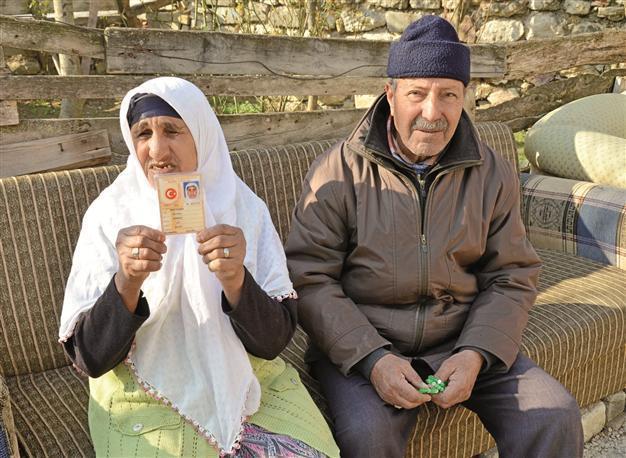Turkey can adapt to ageing population

An old woman is holding her ID card she has taken for the first time in her life in Kocaeli province of Turkey. Turkey’s population is aging, according to data. AA Photo
Turkey’s population, like that of most developing countries, is ageing as a result of increasing life expectancy, urbanization, rising educational levels for women and a decrease in fertility rates, according to recent statistical data analysis.The figures released last week by the Turkish Statistical Institute show Turkey’s elderly population constituted 7.7 percent of the nation’s total in 2013. The U.N.’s rankings of ageing populations places Turkey 91st, relatively low compared to the top three: Japan with 24.4 percent, Germany with 21.1 percent and Italy with 20.8 percent. “The Turkish Statistical Institute’s recently published data once again verified the fact that Turkish society in the near future would face the problem of an ageing population, as has been witnessed in many countries across the globe,” said Asım Karaömerlioğlu, a professor at the Atatürk Institute of Turkey’s Boğaziçi University.
“As of now, Turkey’s age distribution structure offers windows of opportunities since the dependent population’s ratio to that of the productive is quite low,” Karaömerlioğlu said. “Turkey’s governments in the coming two decades must wisely fulfill the economic benefits in order to prepare the country for the ageing era.”
While the growth rate of the total population in Turkey was 1.37 percent in 2013, the rate was almost triple that figure at 3.62 percent for the elderly. “The former emphasis in Turkey about the quantitative requirements of rapidly increasing population should give way to an emphasis on the qualitative restructuring of first the educational and later the economic life.”
’Social transfers’
He stated that the policies regarding the incorporation of an ageing population in productive enterprises of all sorts should be made a priority. The most important source of income for the elderly was “social transfers” and the number of people benefiting from them is increasing with the population’s age: 74.7 percent received social transfers in 2011 and 76.6 percent in 2012. This amounted to 71.8 percent of elderly men and 86.3 percent of elderly women.
He emphasized that encouraging couples to have more children will be a challenge and would require establishing a more stable and secure economic life. “Especially important is securing the fundamental necessities of the urban population, such as employment and educational opportunities,” he said.
















